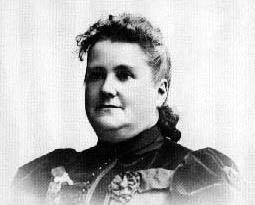Search | Image Archive | Reference | Communities | POV | Lesson Plans | Credits
 Amelia Yeomans was a prominent figure in the early struggles for temperance and women's suffrage in Manitoba.
Amelia Yeomans was a prominent figure in the early struggles for temperance and women's suffrage in Manitoba.
Born in Lower Canada (Quebec) in 1842, Yeomans obtained a medical degree in the United States, becoming one of the first Canadian women to create a place for herself in a profession which only reluctantly recognized the abilities of women.
In 1883, Yeomans moved to Winnipeg to join her daughter, also a medical doctor. There she began to practise medicine among some of the poorest and most deprived residents. Winnipeg in the 1880s was a city experiencing tremendous growth and dislocation. With growth came an amplification of social ills, and the North End where Yeomans worked was struggling with poverty, over-crowding, inadequate housing and lack of medical facilities.
Yeomans' experiences in the North End led her to expand her activities beyond the simple practise of medicine. She became an advocate of "social medicine" linking issues of public health and social justice. She toured factories, prisons, and slums to treat the deprived, and used her contact with E. Cora Hind, an editor with the Manitoba Free Press to publicize the plight of the poor. In time, she became a vocal advocate for the dispossessed, campaigning for better housing, better wages and working conditions (especially for female employees), and better treatment of non-English immigrants.
Yeomans was a vocal critic of the effects of vice and venereal disease, ills that she saw as products of the moral decay of her society. She fought hard to stamp out prostitution, and was a committed member, and sometimes president, of the Women's Christian Temperance Union. Through the Union, Yeomans became activein campaigns to "ban the bar" and a committed suffragist. She was involved in the founding of the Equal Franchise Association in 1894.
Although Yeomans did not live to see suffrage granted to Manitoba women in 1916 (she died in 1913), her work in the last decade of the nineteenth century marked the coming to maturity of the suffrage movement as a formidable political force.
Page revised: 25 August 2009